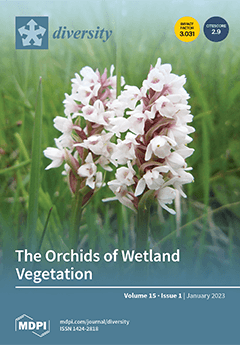This study is devoted to the investigation of
Azygia (Digenea: Azygiidae) species diversity using classical morphological, recent molecular tools (28S rRNA and
cox1 mtDNA for genetic-based inference) and robust statistical techniques (Principal component analysis, PCA). The analysis revealed that the genus
Azygia included
[...] Read more.
This study is devoted to the investigation of
Azygia (Digenea: Azygiidae) species diversity using classical morphological, recent molecular tools (28S rRNA and
cox1 mtDNA for genetic-based inference) and robust statistical techniques (Principal component analysis, PCA). The analysis revealed that the genus
Azygia included four valid species:
A. lucii,
A. longa,
A. hwangtsiyui, and
A. sibirica n. sp. The distribution of the type species
A. lucii was confirmed in the largest Russian rivers: the Volga and the Ob. The worms isolated from
Perccottus glenii were determined as the Chinese species
A. hwangtsiyui, according to the genetic data for the
cox1 mtDNA gene, at 1.32–1.56%. The new species,
Azygia sibirica n. sp, was described from
Esox lucius in the Ob River and differentiated from the type species
A. lucii by the smaller ovary, testes and prostatic sac, wider body, very narrow pharyngeal lumen and form of anterior margin of ovary. In addition, multivariate analysis and three methods for species delimitation (ABGD, GMYC, bPTP) showed the subdivision of
A. lucii and
A. sibirica n. sp. into two separate groups, one from the Volga River and another from the Ob River, respectively. To conclude,
A. lucii infects
Esox lucius in the western (European part of Russia, the Volga River basin), and northern (Western Siberia, the Ob River basin) parts of Russia;
A. sibirica n. sp. has also been found to infect
Esox lucius in the Ob River, while
A. hwangtsiyui infects
Perccottus glenii in the South of the Russian Far East (the Artymovka River basin).
Full article





